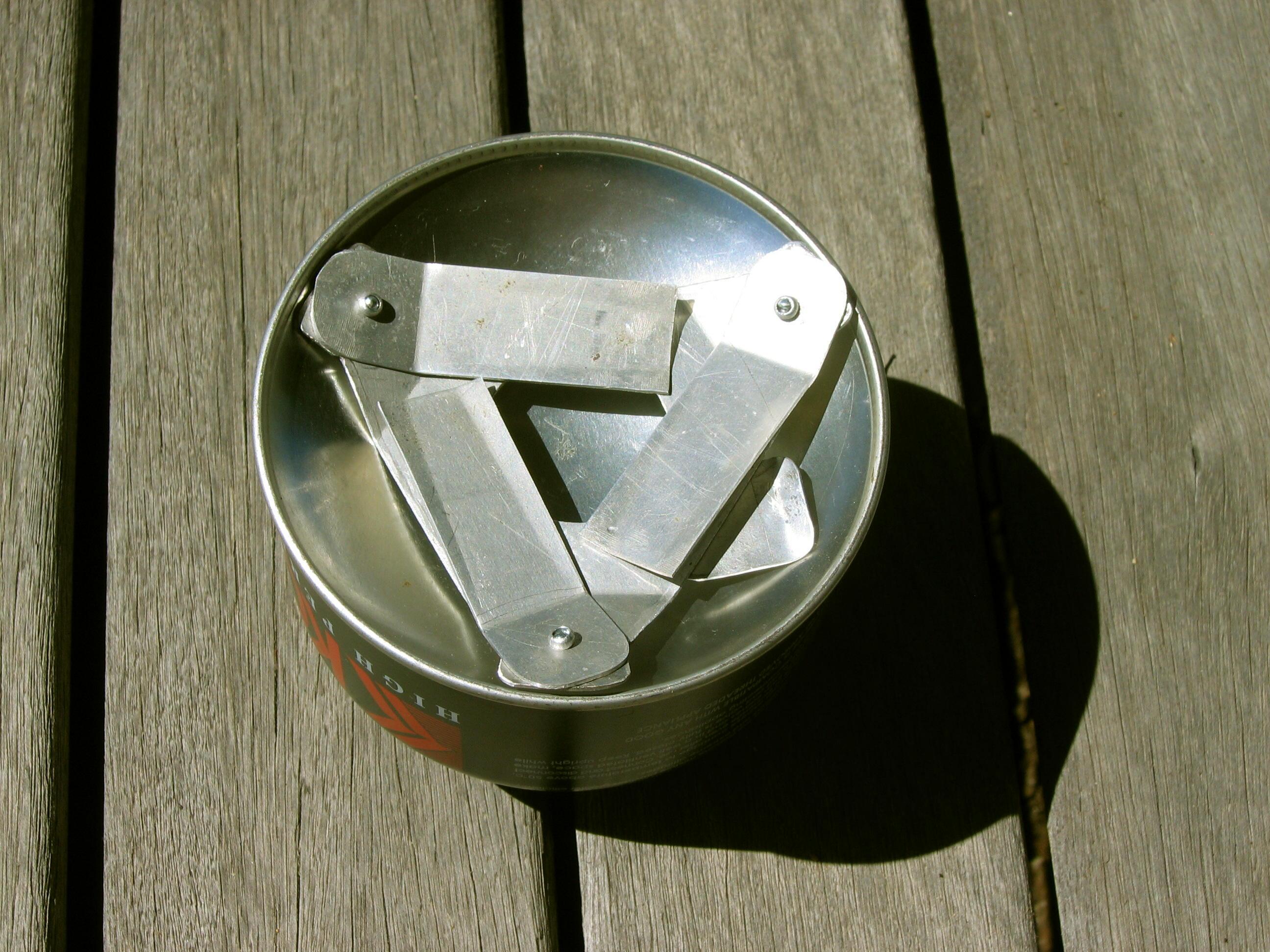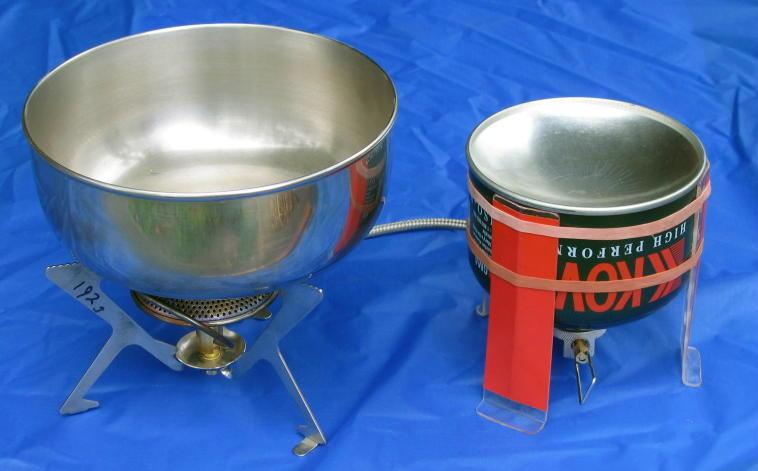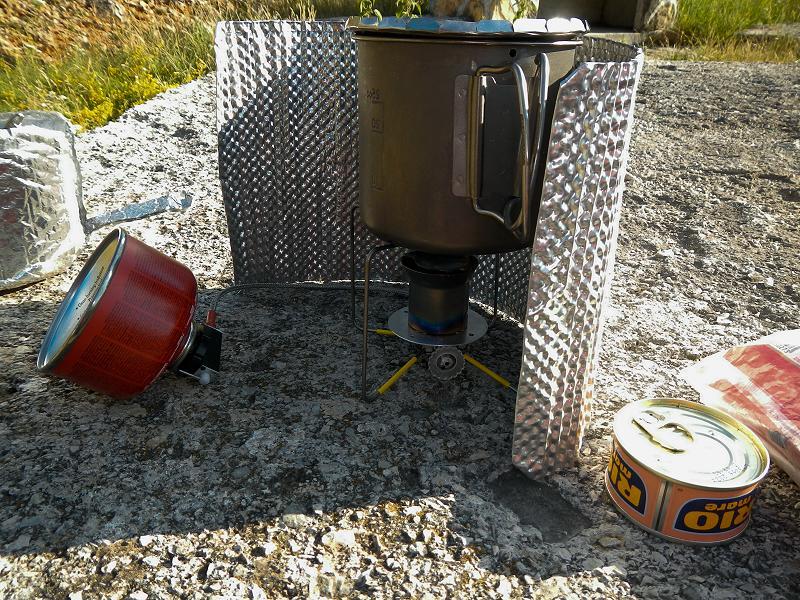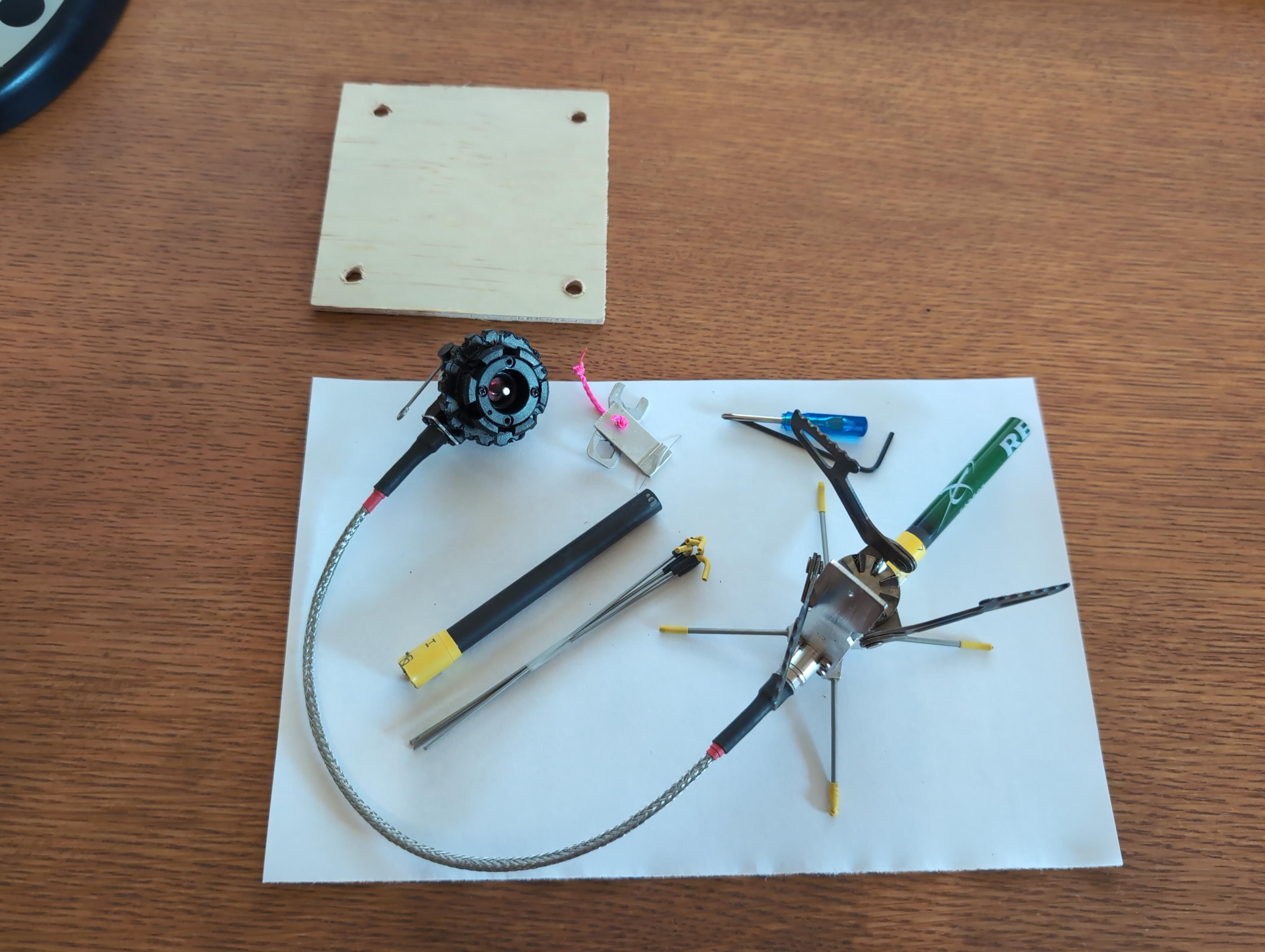Topic
MYOG: SUL Remote Inverted Canister Winter Stove Version 7
Forum Posting
A Membership is required to post in the forums. Login or become a member to post in the member forums!
Home › Forums › Campfire › Editor’s Roundtable › MYOG: SUL Remote Inverted Canister Winter Stove Version 7
- This topic has 96 replies, 18 voices, and was last updated 4 months, 3 weeks ago by
 Roger Caffin.
Roger Caffin.
-
AuthorPosts
-
Jul 29, 2024 at 12:16 am #3815609
Roger,
Here I am working to make tunnel tents a bit lighter and stronger. Now I know why you aren’t totally and completely focused on improving, if only just slightly, this past issue.
I had, in my past, completely ignored tunnel tents (pardon the pun), but I must have had tunnel vision). Now I am hooked on the subject of tunnel tents, and you have wandered into another area. Boiling water? That is about the limit of understanding about what you are doing. Oh, I understand a bit more. But only a bit. However, I have complete faith that you are onto something both interesting and important.
Now, if you would only take a bit of time off and make some ferrules…
Jul 29, 2024 at 1:08 am #3815610Hi William
Have you looked at the ferrules sold by http://www.questoutfitters.com? A range of sizes and angles.
Cheers
PS: no commercial links at all.Aug 4, 2024 at 1:57 am #3815928The stove arrived last Thursday which coincided perfectly with a planed weekend out.
So the first hing was to give it a test-drive at home. Worked well with a medium canister. The question became if I should disassemble the foot and the regulator or let it stay in one. I decided to let it together because of the thread of the stand (what is your recommendation?). In the field I removed the regulator as this is easy but have not touched the foot.
I used it then in the field (currently summer with around 16-18 C). Starting on gas feed and then changing to liquid as intended. Works as it should! On gas it actually sounds a bit and can be throttled – but no worries. The thing I learned is that when inverting I need to open a bit as the flow changes (like described by Roger – but it needs to be experienced).
In respect to the canister connection it works like a charm but needs to get used to. For me, getting the screwing ring first all up, then placing the connector on the canister and then screwing it down to tighten is still feeling strange after a weekend of use. I am used to screwing the canister onto the connector using the thread on the Lindal valve.. However, it works good and what I really like the easy switch on the connector which makes especially the switching off easy.
One notable thing is that I used a large canister (410g) in the field. Arguably strange with a ultralight stove but I had noting else with enough gas at home. Said that, the large canister was a challenge and needed stabilization to avoid tipping to level and impacting liquid flow. With a medium canister it was not a problem – just to be aware off.
All in all I am very pleased to have such a light stove with liquid feed. I will keep you posted with cold weather experience.
Aug 4, 2024 at 2:06 am #3815929Hi Albin
the large canister was a challenge and needed stabilization to avoid tipping to level and impacting liquid flow.
I had not thought of that recently. Thanks for the feedback.In the past I have always propped the large canister up between my joggers, in the vestibule of the tent. Actually, I also used my joggers with a ‘medium’ sized canister too. I set my joggers up before I light the stove: safer that way.
Cheers
Sep 19, 2024 at 10:48 am #3818443Well done (again) Roger! What a great series. Following along with your design justifications and iterations here has been eye opening! I’ve been using the Fire Maple Blade 2 for a bit. Mostly for all the advantages of remote canister setup. It works fine but I hate how thick and stiff the braided fluel line is. There is always a near “kink” when packed away and I suspect it will be the first thing that fails.
I noticed the line hinge on one of your earlier designs and think, although it increases complexity, it’s a great advantage in packability and reduces stresses on the line. I would love to see V7 packed away. Cheers and thank you for being so detailed and open through this process!
Sep 19, 2024 at 8:07 pm #3818463Hi Dirtnap
I would love to see V7 packed away.
What a good idea! So I set it up and took a photo.

This shows a V7 stove inside my Trangia kettle – as used on all our day walks for morning coffee. I made the stove so the arms could be folded down and the base (wire legs) detached (M6 thread), but in this photo I haven’t bothered to do either of those things.The stove is so small it just drops inside the Trangia, along with carbon fibre handle, mini-tea-towel (for drying the kettle afterwards), Bic lighter, optional sugar in Nalge container, and so on and so forth. The coffee container goes inside the SS filter, inside two stacked plastic coffee mugs.
Then the lid goes on the Trangia, it goes in a UL stuff sack and into my day pack. With this stove there are no kinks needed in the hose: it is very flexible.
Cheers
Sep 20, 2024 at 5:48 am #3818469I am not sure about disassembling the stove. It makes for a LOT of fiddly small bits that have a way of developing legs and walking away. Examples: three times I lost the carbon tube (the black tube on the flame control) and found it in odd places, the stove base is OK and screws on and off, but removing the legs only creates more fiddly bits in my ditty bag (leaving it together works, but then there are four fairly sharp “poke” items in my bag.) The stove hose works well, though I had some minor trouble with it leaking (fixed with a touch of silicone adhesive caulk,) the base and stakes to hold it down can be painful with five pieces needed (again small stakes to loose and the small piece of plywood.) Because of all the parts, I consider the stove time consuming to set up, though not difficult.
The hose is flexible enough, but an extra three to six inches of tubing would have made it easier to use. Without a stand, using a large container for gas is not something I would do. It really sounds like asking for trouble. Besides, I often get things set up and run down to fill my water bag while boiling supper water…I need my shoes ON.
While the gas connector is better than the V1, it needs a couple small legs to hold the canister up. I’m sure Roger could mill them, or, use a screw on base similar to the stove base.
With the V1 (in the inverted position) a lot of debris/oils from the canister gas quickly plug up the filter/valve. I simply removed the filter and blow it out between uses. I also removed the filter from the V7, but it has been warm enough so far not to need the inverted operation. It runs very well in gas mode.It takes about 30sec to set up the V1 stove. However, assembling the base, attaching it to the stove body, folding out the pot rests, setting up the stove base plate (and optionally staking it down) is a lot of work compared to a standard “topper” stove. All in all, it takes extra time to set up the V7 stove for operation and is quite fiddly.
Air mixing/gas flow did seem a bit impeded. I removed to burner, screwed the sleeve down two turns and reassembled it. That solved the problem for small flames. I have found the greatest efficiency above 0C, was around seven to eight minutes burn time to boil 2 cups of water. Below 0C, it drops to around five to six minutes due to the additional heat needed (ambient air temps really suck heat out of the system.)
However, the V7 seems to run close to the same as the V1, with rather high heat production for the amount of gas used. The low profile allows me to use a short wind screen (which also fits into my ditty bag) and get good heating at low outside temps.
Over all I like the V7.
Sep 20, 2024 at 8:07 am #3818472Since Marco mentioned stability:
I still have what I think is a V1 with the fms-116 burner head. Stability when used with a Evernew ECA252 .9L pot or a Banks Frybake skillet has not been great. We were on Isle Royale last year and the picnic tables the park service sets up next to the wooden shelters are notoriously not-level. I had at least 1 pot of water tip over because those little legs were tippy and the table wasn’t completely level. Fortunately my 12-year old grandson wasn’t sitting in front of the pot when it spilled.
When it’s just my wife and me on 3 season trips, we use an upright canister stove like the Soto Amicus and a 750ml titanium pot. I don’t do a lot of winter camping these days, so my Caffin stove has been relegated to trips where I’m doing more gourmet cooking for 2+ people. Due to the “fiddly nature” of the stove however, I may replace it with a FireMaple Blade2, Kovea Spider, or similar.
Even on Mt Baker in July where I needed a more windproof setup, I wound up taking the Soto Amicus with a 1L Olicamp heat exchanger pot and one of Jon Fong’s new Ocelot 6 Universal windscreens. In fact, that setup will probably go with me when my wife and I hike the Laugavegeur Trail next year.
Sep 20, 2024 at 3:38 pm #3818489I did make a tripod for holding the canister upside down:

It even folds up to fit into the base of the canister.

Very cute, but I have to remember to put it on the canister before I connect the stove.
The alternative is very low-tech – and both simple and light.
I can leave the big rubber bands on the canister all the time of course. Strips of clear Lexan plastic, but anything would do. The red tape is because clear plastic is a bit easy to lose.
For the rest – I agree with Jim that doing a complete strip-down and rebuild every time is a hassle, so I don’t. As shown in the photo above, I leave it fully assembled and pack it away in my pot. Ir’s small.
Cheers
Sep 20, 2024 at 10:24 pm #3818504I’ve been thinking of fabbing a simple wire/rod inverter that can be snapped around the tank lip. Titanium. Doesn’t need to be vertical.
Sep 21, 2024 at 12:11 am #3818509In fact, having it off-vertical might be a good thing. See
https://backpackinglight.com/dirt-in-canisters-caffin/
for why.Trouble is, the wire won’t work when sitting on a rock scarp.

(V6 stove, Via Dinarica, Carsten Iwers, Jan 2020, with thanks)
Cheers
RogerSep 30, 2024 at 6:52 pm #3819128Roger –
My V7 stove package has arrived – It is amazing!
Half the weight of my V1 (42g vs 86g) and much more compact for storage in a pot or mug (~60mm long vs ~90mm). I should do a side-by-side photo too….
Now — to get it fired up!Vance
 Oct 1, 2024 at 10:01 am #3819165
Oct 1, 2024 at 10:01 am #3819165Looks like your stove has the updated shunt design. 👍
I’ve been using mine in warm weather (first time slightly below freezing was last weekend) and I am loving it. Excited for the arrival of cooler weather.
Oct 1, 2024 at 4:45 pm #3819183All stoves now have the upgraded Heat Shunt.
Well, the owners of the ones already sold have been provided with the upgrade: it’s up to them to decide whether to fit it. The stove does work fine with the original Heat Shunt in ‘cold’ weather, just not at high power at -20 C.
Caution: this stove is not meant for use with a 100% gas feed: the body can get too hot after a while – no evaporative cooling. If you want a stove for a 100% gas feed – try a simple upright.
Cheers
RogerOct 2, 2024 at 6:45 am #3819192Is this the case for the V7 version or do previous versions have the same overheating issue?
Oct 2, 2024 at 3:40 pm #3819219Good question, but I have not done the testing.
My semi-educated opinion would be that it would apply to all my stoves.V1, V4 and V7 all have ‘conventional’ burner heads and rely on the Heat shunt to heat the stove body. With continued inflow of heat the stove body may be expected to get hotter and hotter. But that inflow of heat is balanced by the extraction of the energy needed to vaporise the liquid fuel. That is, the design assumes that there is a liquid feed. After all, they are ‘remote inverted canister stoves’ .
The other models (V2, V3 & V6) are ‘Vortex Burners’, and don’t have an explicit Heat Shunt. Instead heat flows down to the stove body under the Vortex Burner chamber by conduction through the base of the burner chamber. The base gets heat from the burner wall (which gets red hot) and by conduction from the swirling flames inside the chamber. There is lots of energy flowing down.
Footnote: the burner chamber wall is isolated from the chamber base by tiny stainless steel washers – to limit the amount of conduction from the red hot wall. There is such a thing as ‘too much’.
Regardless of the design, if a gas feed is used all the time the stove body is going to be getting a lot of heat in and losing little heat outwards. Which means the stove body can keep getting hotter, to the point where the two O-rings inside it can exceed their safe operating temperature. That is ‘unwise’.
This is why the stove needs to be primed with a gas feed for maybe 20 seconds: so the stove body gets hot enough that it can reliably vaporise the incoming liquid fuel. But no more than that. Once hot enough, switch to a liquid feed for safe and happy cooking.
Cheers
Oct 3, 2024 at 4:03 pm #3819245Until I read this post I was firmly convinced that I had a V5 (which, apparently went into the bin)…
Turns out that I’m a happy V4 owner.
Oct 3, 2024 at 5:53 pm #3819255Hi Kevin
No V5 design was ever finalised, let alone made.
I can confirm that you have a V4, bought on 20/08/2020.
Enjoy!Cheers
Oct 5, 2024 at 2:34 pm #3819361Interesting about the overheating possibility Roger. There are many LF/MF stoves where you can use a canister upright without ill effect. My Omnite Ti and BRS-8 for example. I would think they would have similar issues with the O-rings given the amount of heat dumping into the body without liquid fuel to cool it off. Perhaps because they are so much more heavy and have so much more mass that plays into it? Always learning.
I’ve always wondered why stove makers went away from graphite packing on the valve stems. Svea 123R, Primus 8R et al going back a century. Works great and can withstand huge amounts of heat vs Viton O rings.
Oct 5, 2024 at 3:32 pm #3819367I have not examined a BRS-8 stove, but the web pics of it show a white-gas driven vortex burner. No signs of a canister. The Primus Omnite Ti looks like a copy of the BRS-8 (rebrand?). So – dunno.
The reason for replacing a functional packed-graphite seal with an o-rings is probably simple: $$$ O-ring are a few cents each, and very easy to fit.
Also, I believe the Svea may have been invented before Viton O-rings even existed. It would seem likely that the valve gets VERY hot. I would not be game to use an O-ring on it!
Such simple things, stoves . . .
CheersOct 5, 2024 at 4:34 pm #3819369BRS 8 has many different iterations (8a, 8b etc) and copycats (APG). Too many varitations to count. Nowadays they almost all come with a lindal style pump connector to use with canister gas. I would consider these all ripoffs of the Optimus Nova just without control at the burner (cheaper).
Omnilite Ti is the lighter brother of the Primus Omnifuel. Same stove, different material, mostly titanium. Probably my favorite LF stove. Same thing the pump end has a lindal connector. I have the factory silent burner. Only use it on high country trips when it’s cold or when I want to play with fire. Alas I still have a weakness for liquid fuel stoves, but it’s too heavy and complex for summer use.
Strongly considering your V7 to replace my Fire Maple Blade 2. Fine stove but probably 3 ounces overweight.
Oct 5, 2024 at 6:14 pm #3819373Some light dawns. The stove has no valve at the body: it is at the canister? Well, yes, that means the hose connection to the stove can be a ‘hard’ connection, using compression for sealing rather than O-rings. This should allow the stove to get a lot hotter.
What about the hose material? I suspect it is cooled (enough) by the gas flowing through it. A guess.Blade 2: I think it is quite a nice stove, very stable, wide flame, strong pot support. But those virtues make it a bit heavy – 137 g . Might be good for cooking for a party of, say, four?
Why don’t I use a hard connection at the stove? It would not make much difference, as there is still the O-ring on the needle valve. Having the control valve at the stove handling a GAS flow is a basic design feature. Also, I like being able to rotate the hose at the stove to get the stove to sit flat – the hose is always curved, in any stove.
Cheers
-
AuthorPosts
- You must be logged in to reply to this topic.
Forum Posting
A Membership is required to post in the forums. Login or become a member to post in the member forums!
Trail Days Online! 2025 is this week:
Thursday, February 27 through Saturday, March 1 - Registration is Free.
Our Community Posts are Moderated
Backpacking Light community posts are moderated and here to foster helpful and positive discussions about lightweight backpacking. Please be mindful of our values and boundaries and review our Community Guidelines prior to posting.
Get the Newsletter
Gear Research & Discovery Tools
- Browse our curated Gear Shop
- See the latest Gear Deals and Sales
- Our Recommendations
- Search for Gear on Sale with the Gear Finder
- Used Gear Swap
- Member Gear Reviews and BPL Gear Review Articles
- Browse by Gear Type or Brand.









